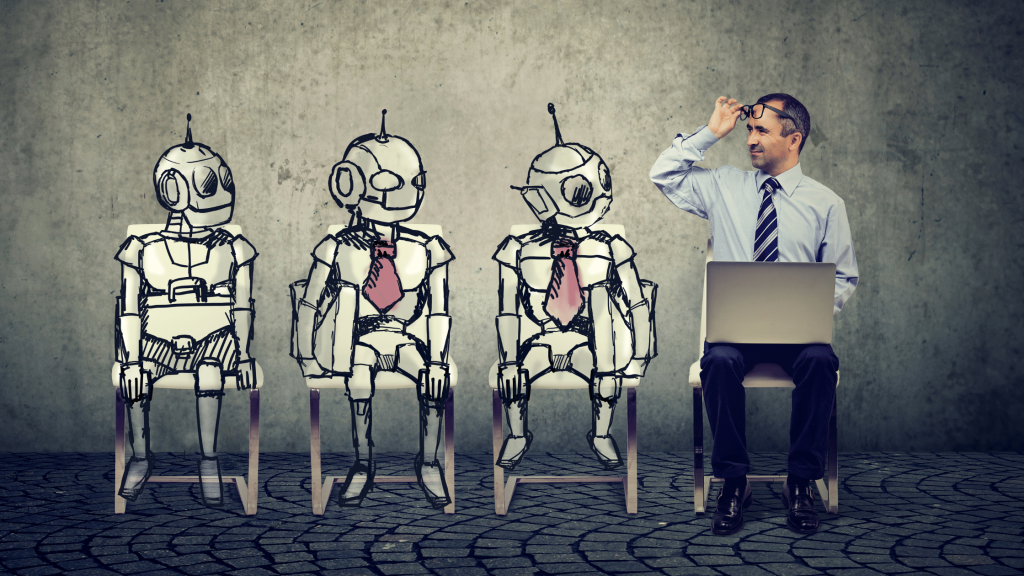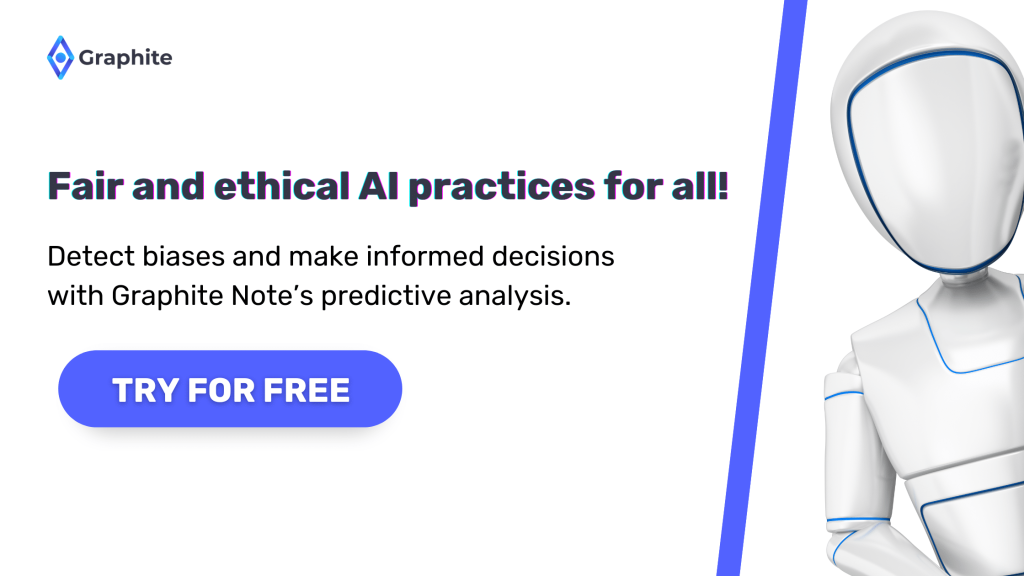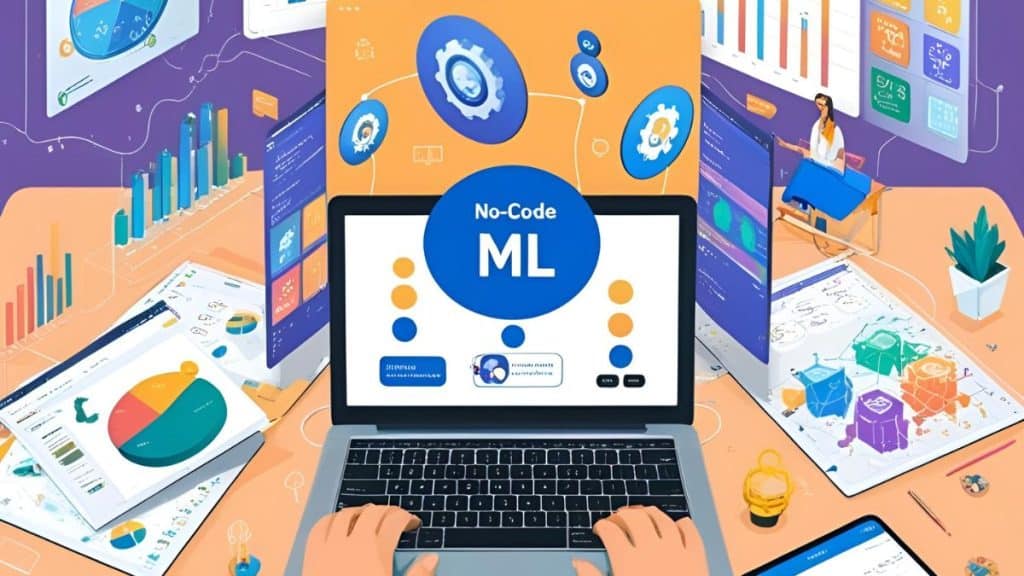Practical examples of AI biases in action
AI bias is a problem that plagues AI systems, especially those that use deep learning. AI biases are the result of algorithms being trained on datasets with inherent biases. This can lead to discrimination and unfairness in decision-making processes. We discuss some real-world AI bias examples, define AI bias, and the effects of biased AI. Artificial intelligence bias is something you must be aware of when building AI algorithms and using AI systems.
AI bias and human bias
AI bias is a problem in artificial intelligence systems. AI bias arises when an algorithm is trained on biased data, leading to biased decisions. AI bias is also known as machine learning bias. A good example of gender bias follows. If a machine learning algorithm is trained on only male doctors and female nurses, it would be unable to identify gender neutral words. Gender neutral words are words like doctor or nurse. This is an example of passing on human biases, or cognitive bias, to an artificial intelligence algorithm and AI model.
Inherent AI bias
Many algorithms are affected by inherent bias that is passed on by the humans who designed them. AI models and machine learning algorithms must optimize for AI fairness. The goal should be to avoid machine learning bias, algorithm bias, and cognitive bias as much as possible. It’s not, however, possible to avoid algorithm bias entirely. AI models and an artificial intelligence algorithm are defined by some level of human input. Even generative AI has been found to have inherited some level of bias.

AI bias as a priority
The 2020 State of AI and Machine Learning Report found that 15% of companies reported data diversity, bias reduction, and global scale for their AI as “not important.” Only 24% of companies stated that unbiasedness, diversity, and global-ability as mission critical.
Several AI initiatives still need to make a genuine commitment to overcoming bias in AI. The success of these efforts has become increasingly important. With the rise of generative AI, now reaching into generative search, the reduction of AI bias must be a priority.
What are the types of AI bias?
In the case of an artificial intelligence system, bias may take two forms:
- Algorithmic bias or “data-based” biases,
- Societal AI bias.
Algorithmic data-based biases occur when algorithms or AI tools use biased training datasets. From there, they learn from values that are inaccurate representations of reality. For example, facial recognition software that isn’t taught how human faces differ between races. Racial bias and gender bias are key challenges. AI fairness must be prioritized.
Societal AI bias occurs when our assumptions and norms as a society cause us not to see certain aspects correctly. It’s essentially an issue where we don’t know what we need to know!
Algorithmic bias or data-based bias
Algorithmic bias is the result of a computer program making decisions based on data that is biased. It can occur when the data used to train the algorithm includes only certain types of information, such as white males and no women or minorities. The resulting algorithm will then make decisions based on this limited information. The model may be unable to make accurate predictions in other situations.
Human decisions and AI bias
This type of bias can also occur when the training data is skewed in some way. This can happen when the training dataset excludes certain groups. Human decisions play a role in contributing to AI bias in many ways.
An example of this might be if you were training artificial intelligence systems to detect faces in images. You used photos from a specific country where people only had dark skin tones. It could cause problems applying this same model elsewhere in the world where people have different skin colors.
Societal bias
AI is a tool, not a person. AI is designed to solve problems and make decisions. AI has no inherent bias or prejudice. AI only knows what you tell it. The biases that go into your artificial intelligence system come from the people who built it. This is why we must be careful about how we train our AI systems. Responsible AI development is a priority.

Encouraging responsible AI development will enable further improvement as the landscape evolves. We need to be aware of how society is biased toward specific groups of people. We can then make sure to avoid those same biases when creating our programs.
Diversity and AI bias
When we build AI and machine learning models, we must ensure that it doesn’t perpetuate existing biases. It can be done by training an AI system using data from a diverse set of people. If you’re building a facial recognition system, you should use photos of people with different skin colors and ethnicities.
A good example of societal bias would be to assume that people from one ethnicity share a single skin tone. This also applies to other forms of bias.
If you’re building a system to make medical diagnoses, it should use data from a diverse set of patients. That way, your AI model won’t associate specific symptoms with one group more than another.
Where does AI bias originate?
AI bias is a complex issue. It’s essential to understand the different sources of bias. Bias can come from the data that AI systems are trained on or how they were programmed. It can also be introduced by human factors, like the people who write code for AI systems.
There’s also a bias inherent in how AI systems are designed. It’s not just about what’s in their memory banks but about how they perceive and interact with their environments.
Let’s take a look at the portrait art generator. This AI tool is used to turn your selfies into Renaissance and Baroque-style portraits. The data fed into the AI largely contained only white and caucasian portraits. The algorithm therefore failed to account for varying skin tones in its results. This meant that if you tried feeding the AI African-American selfies, it would render portraits with inaccurate skin tones.
AI bias and design limitations
AI can be both biased and limited by its design. The same thing can happen when you feed different types of data into the system. It only knows what it’s been taught, so if the data set isn’t diverse enough, it will be biased in its output.
The solution to this problem is to ensure that when you train your AI, you provide it with various data sets. It will help prevent your machine learning systems from being biased. This will help your algorithm to account for different skin tones and ethnicities in its output. Reducing biased results must be a fundamental priority for your machine learning system.
How do you prevent bias in AI from creeping into your AI models?
One of AI’s biggest challenges is preventing bias from creeping into models. Bias can come from various sources. These can include the training datasets you use to train your model and any human bias that may have crept in during the process. Here are some basic guidelines:
Define and narrow down the goal of Your AI
To prevent bias in an artificial intelligence model, you must define and narrow down the goal of your AI. You need to specify the exact problem you want to solve. Then, you need to narrow it down, by defining what exactly you want your model to do with that information.
Solving too many scenarios can mean you need thousands of labels across an unmanageable number of classes. Narrowly defining a problem, to start, will ensure that your model is performing well on the exact task it was designed for.
For example, if you’re trying to predict whether an image contains a cat or not, it’s essential to define what exactly constitutes a “cat.” If your image is of a white cat on a black background, does that count as a cat? What about a black and white tabby? Would your model be able to tell the difference between these two scenarios?
Collect data in a way that allows for differing opinions
When collecting data, it’s essential to ensure you’re getting the complete picture. One of the best ways to do this is by collecting data in a way that allows for varying opinions.
When building machine learning systems, multiple ways exist to define or label a particular event. Account for these differences and incorporate them into your model. This will enable you to capture more variations in the real world’s behavior.
For example, if your model is designed to predict whether a particular person will buy something. You might ask your model to classify people based on their age, income level, and occupation.
But what if other factors can be used to predict this outcome? For example, you could also include the length of time someone has been in the market for a new car or how many times they’ve visited the dealership before.
This is where the importance of feature engineering comes in. Feature engineering is the process of extracting features from your data so that you can use them for training your model. Be careful when selecting which features to include. The features you choose affect how your model performs.
Understand your data
Managing bias in datasets is a widely discussed issue. The more you know about your data, the less likely it will be that objectionable labels slip through unnoticed into your algorithm.
How to solve for AI bias
As AI continues to grow and evolve, we will see more and more instances where technology is being used to perpetuate bias. The best way to fight this is through education, training, and awareness.
The first step is for companies to acknowledge their biases and consider them when making decisions about their AI systems. As humans, we all have biases that affect how we see the world around us. Companies should be transparent about their data sets so that they can be analyzed by others. Analysts outside of their own organization may notice trends or patterns that may not have been noticed before. We need to educate ourselves on how our biases affect our day-to-day lives and how these biases might affect AI systems over time if left unchecked.



![A Comprehensive AI and Machine Learning Glossary of 100+ Key Terms [A-Z]](https://graphite-note.com/wp-content/uploads/2023/01/Blog-banners-2-1024x576.jpg)

